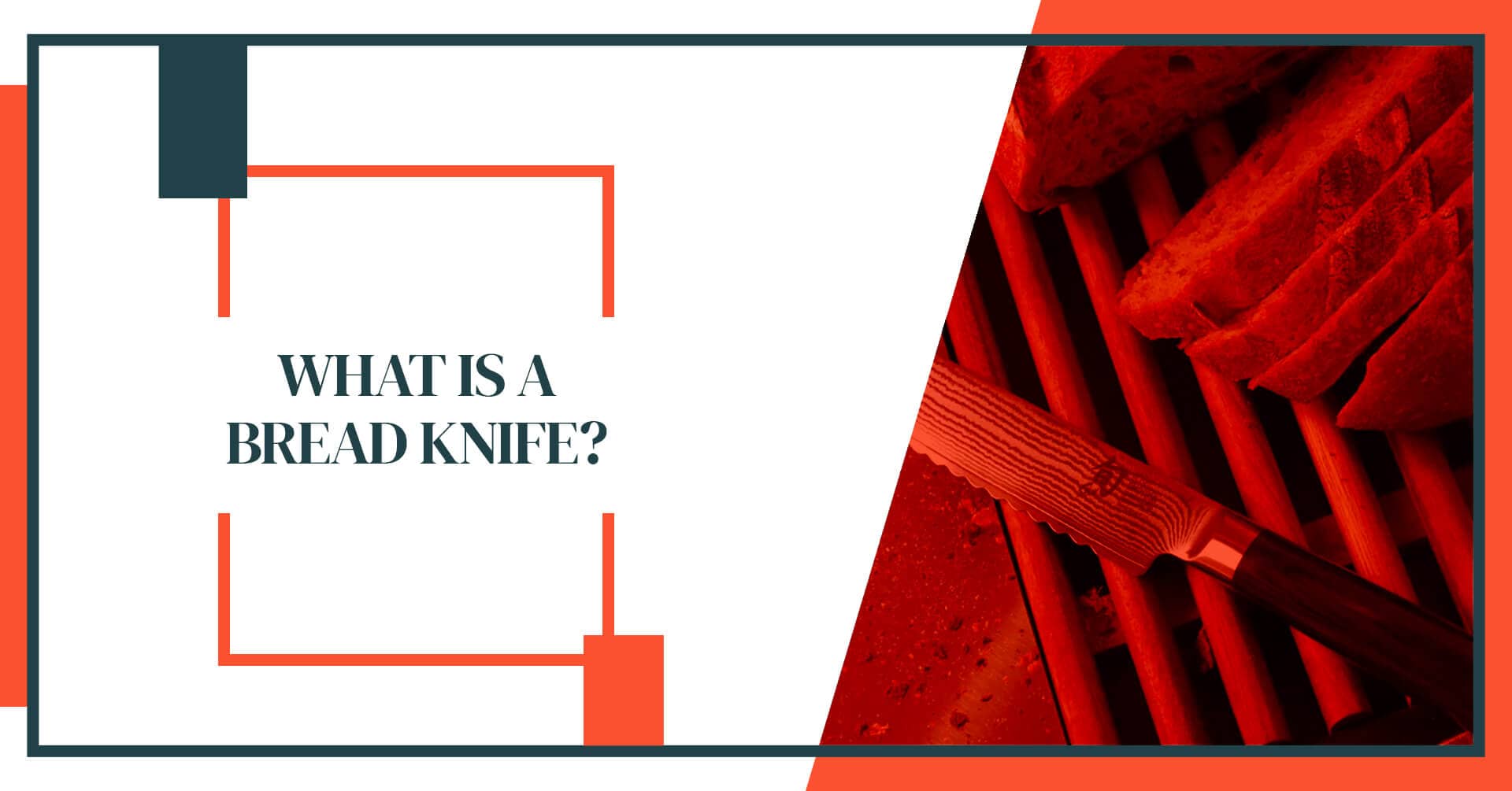What is A Bread Knife: Its Definition, Uses, And Benefits.
Knives are a kitchen essential; among them is the versatile bread knife. With its unique serrated blade designed to easily slice through crusty loaves and soft sandwich bread, this powerful tool brings efficiency and precision to your culinary creations.
But did you know it can tackle more than just bread? In this blog post, we’ll dive into the definition of a bread knife, explore its various uses beyond slicing your favorite carbs, and uncover the benefits of owning this cutting-edge kitchen staple.
Key Takeaways
- A bread knife is a kitchen essential with a serrated blade for clean cuts, long and narrow shape for even slicing, and a comfortable handle for easy grip.
- A bread knife can be used beyond just slicing bread; it’s great for chopping chocolate and leveling cakes, carving crusty meats, and slicing sweet treats like cakes and pastries.
- A bread knife offers more efficient cutting, improved precision in slicing, better presentation of sliced goods, and increased durability with high-quality blades made from high-carbon stainless steel.
- Investing in a quality bread knife will enhance your cooking experience by significantly improving precision while reducing strain on your wrist during extended use. It also makes it easier to create picture-perfect results every time you use it!
Definition And Features Of A Bread Knife
A bread knife typically features a serrated blade for clean cuts, a long and narrow shape for even slicing, and a comfortable handle for easy grip.
Serrated Blade For Clean Cuts
One of the key features that sets a bread knife apart from other kitchen knives is its serrated blade. The serrated edge consists of sharp teeth, much like a saw.
These teeth grip and tear through tough outer surfaces while protecting the softer inner texture.
A serrated bread knife’s clean cuts prove advantageous for bread and delicate foods such as tomatoes and soft fruits.
A razor-sharp straight-edged blade may struggle to pierce the smooth skin without applying downward pressure, resulting in crushed or mushed fruit. However, with its unique design and cutting edge, a serrated blade easily glides through thin skins without damaging what’s beneath.
Long And Narrow Shape For Even Slicing
The unique design of a bread knife features a long and narrow blade that plays an essential role in achieving even slices. This elongated shape gives the user more control, ensuring clean, equal cuts through various types of bread, from soft sandwich loaves to crusty artisanal baguettes.
For example, imagine easily slicing through a freshly baked sourdough loaf using your favorite high-carbon stainless steel bread knife. The long blade glides steadily while meticulously separating each slice without crushing its delicate interior.
This makes for an appealing platter at your next dinner party and guarantees consistent taste and texture as you enjoy every scrumptious bite.
Comfortable Handle For Easy Grip
A comfortable handle on a bread knife ensures easy and efficient slicing. An ergonomically designed grip provides better control and reduces the strain on your wrist and hand during extended use.
In addition to comfort, the handle should offer excellent maneuverability while working with various types of bread – from crusty loaves to delicate sandwich slices.
Remember, an optimal balance between the blade and handle can greatly enhance your cutting precision and overall satisfaction using a high-quality serrated bread knife.
Uses Of A Bread Knife
A bread knife is perfect for slicing soft bread without crushing it, chopping chocolate and leveling cakes, and carving crusty meats and sweet treats.
Perfect For Slicing Soft Bread Without Crushing It
One of the primary uses of a bread knife is slicing soft bread without crushing it. The serrated blade allows for a gentle sawing motion, which prevents pressure from being applied to the loaf and compressing its fluffy interior.
This makes it ideal for delicate sandwich bread, brioche, or croissants. Cutting through crusty loaves can be challenging with other knives since they tend to squish the interior while trying to jimmy their way through tough exteriors.
Ideal For Chopping Chocolate And Leveling Cakes
In addition to slicing bread, bread knives are great for the pastry kitchen. They have a serrated blade that works well for cutting through delicate foods such as soft fruits and vegetables, including chocolate! The serrated teeth make it easy to cut through the chocolate without creating unwanted pressure or melting it.
Professional kitchens often use specialized cake levelers, but home cooks can achieve the same level of precision by using a good quality bread knife. Mercer Culinary and Tojiro offer highly-rated bread slicers that work perfectly on loaves of crusty bread and soft cakes.
Great For Carving Crusty Meats And Slicing Sweet Treats
A bread knife is not just for slicing through soft sandwich bread; it also comes in handy when carving crusty meats such as roasts and hams. The serrated edge of the bread knife saws through the tough exterior without crushing the tender interior, producing clean slices with minimal effort.
Moreover, a bread knife is perfect for slicing sweet treats like cakes and pastries. Its long and narrow shape allows you to level cakes easily by trimming off raised portions of cake layers before frosting them.
You can also use it to slice pastry dough into even sheets or cut delicate fruit tarts without squishing their toppings.
Benefits Of Using A Bread Knife
A bread knife offers more efficient cutting and improved slicing precision, resulting in a better presentation of sliced goods and increased durability and longevity.
More Efficient Cutting
Using a bread knife for slicing bread and other soft foods is more efficient and makes it easier to create neat slices. The serrated knife creates little pockets of air between the food and the blade as you cut, which helps prevent crushing and ensures each slice comes out clean.
In addition to cutting soft bread, a bread knife can make slicing through harder crusts on loaves or cakes much easier. With its long and narrow shape combined with razor-sharp teeth set at an angle in the serrations on the blade, a good quality bread knife will easily tackle even tough cuts.
Improved Slicing Precision
Using a bread knife can significantly improve the precision of your slicing, thanks to its long, narrow shape and serrated blade. The long blade allows even strokes across larger loaves, ensuring uniform slices every time.
Meanwhile, the serrated edge grips onto crusts and tough exteriors without tearing or crushing them, making cutting through hard crusts such as baguettes or sourdough bread much easier.
One example of improved precision is using a bread knife to level cakes before frosting them. A regular chef’s knife might have jagged edges or an uneven surface, but a bread knife makes smooth cuts that create perfectly flat layers.
Better Presentation Of Sliced Goods
A bread knife is a great investment for anyone who wants to better present their sliced goods. The serrated edge of the blade allows you to cut through thick and crusty loaves without squashing them.
This results in clean slices that are evenly sized, which makes for an attractive display on your plate or serving board. Additionally, using a bread knife minimizes crumbs and prevents the bread from losing its shape, resulting in an overall polished appearance.
In addition to slicing bread cleanly, the precision of a good bread knife can elevate other foods as well. For example, this kitchen tool can work wonders if you want uniform chocolate shavings for garnishing desserts or finely chopped nuts for toppings! With sharp teeth and gentle sawing motions across various food items such as fruits and vegetables like tomatoes, the tomato skin remains intact while skillfully sliced into even pieces.
Increased Durability And Longevity
Using a bread knife in the kitchen can provide more durability and longevity than other knives. This is because bread knives are designed with high-quality blades made from materials such as high-carbon stainless steel, known for its rust resistance and long-lasting sharpness.
Additionally, using a dedicated bread knife for cutting through different loaves helps prevent damage or wear and tear on other kitchen knives.
By not using other non-serrated blades for slicing soft sandwich loaves or dense crusty artisanal sourdoughs, you can ensure that your chef’s knife stays sharper for longer periods.
Conclusion
In conclusion, you should use a bread knife, and it is essential for any home cook who loves to bake or slice delicate foods. Its features, including the long blade with serrated edges and comfortable handle, make cutting through hard crusts and soft interiors easy.
With improved slicing precision and increased durability, investing in a quality bread knife can bring versatility to your kitchen tools.
FAQs:
What is a bread knife used for?
A bread knife is primarily used for cutting through crusty and thick bread loaves without squishing or tearing the soft interior. Its serrated edge allows it to grip the surface of the bread while slicing cleanly through it.
What makes a good quality bread knife?
A good quality bread knife should have a long, sharp, and serrated blade that can easily cut through different types of bread without requiring too much pressure from the user’s hand. It should also have a comfortable handle that provides a secure grip and can withstand regular use.
Can I use a normal kitchen knife to cut bread?
While you technically can use any kitchen knife to cut through bread, using a non-serrated blade may not be as effective or efficient as using a dedicated bread knife. Regular knives tend to squish the loaf while cutting, making it difficult to get clean slices.
Besides cutting through bread, Are there other uses for serrated bread knives?
Yes! Serrated knives can also be used for slicing through cakes with hard exteriors, such as cheesecakes or angel food cakes, carving watermelon rinds, or even filleting fish with tough skin textures like salmon. Their sharp serrated blades make them versatile tools in the kitchen beyond just cutting up loaves of fresh-baked goodness!
Additional Resources
The Art of the Slice: A Dive into Japanese Knife Types
Western Style Knives 101 | A Comprehensive Introduction to the Basics
19 Types of Kitchen Knives & Their Uses
9 Kitchen Knife Care Tips for Maintaining Your Edge
Forging Culinary Excellence: The Best Steel For Kitchen Knives

